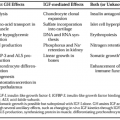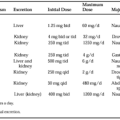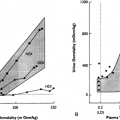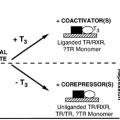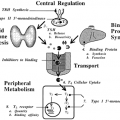THE ENDOCRINE PATIENT
FREQUENCY OF ENDOCRINE DISORDERS
In a survey of the subspecialty problems seen by endocrinologists, the six most common, in order of frequency, were found to be diabetes mellitus, thyrotoxicosis, hypothyroidism, nontoxic nodular goiter, diseases of the pituitary gland, and diseases of the adrenal gland. Some conditions seen by endocrinologists are infrequent or rare (e.g., congenital adrenal hyperplasia, pseudohypoparathyroidism), whereas others are relatively common (e.g., Graves disease, Hashimoto thyroiditis), and some are among the most prevalent diseases in general practice (e.g., diabetes mellitus, obesity, hyperlipoproteinemia, osteoporosis, Paget disease). The third most common medical problem encountered by general practitioners is diabetes mellitus, and the tenth most frequent problem is obesity.66
Of the total deaths in the United States (i.e., both sexes, all races, and all ages combined), diabetes mellitus is the seventh most common cause. The most common cause of death (heart disease) and the third most common (cerebrovascular accidents) are greatly influenced by metabolic conditions such as diabetes mellitus and hyperlipemia.67
COST OF ENDOCRINE DISORDERS
The frequency and morbidity of endocrine diseases such as osteoporosis, obesity, hypothyroidism, and hyperthyroidism, and the grave consequences of other endocrine disorders such as Cushing syndrome and Addison disease demonstrate that the expense to society is considerable. In the case of diabetes, the health care expenditure is staggering. Approximately 10.3 million people have diabetes in the U.S., and an estimated 5.4 million have undiagnosed diabetes. Direct medical expenses attributed to diabetes total $44.1 billion. The total annual medical expenses of people with diabetes average $10,071 per capita, as compared to $2,669 for persons without diabetes.68 Interestingly, these expenses may be less if the appropriate specialties are involved in the care.69
FACTORS THAT INFLUENCE TEST RESULTS
In clinical medicine, hormonal concentrations usually are ascertained from two of the most easily obtained sources: blood and urine. The diagnosis of an endocrinopathy often depends on the demonstration of increased or decreased levels of these blood or urine constituents. However, several factors must be kept in mind when interpreting a result that appears to be abnormal. These may include age, gender, time of day, exercise, posture, emotional state, hepatic and renal status, presence of other illness, and concomitant drug therapy (see Chap. 237 and Chap. 239).
RELIABILITY OF THE LABORATORY DETERMINATION
The practice of clinical endocrinology far from a large medical center was previously hindered by the difficulty in obtaining blood and urine tests essential for appropriate diagnosis and follow-up care. However, accurate and rapid analyses now are provided by commercial laboratories. Nevertheless, wherever performed, some tests are unreliable because of methodologic difficulties. Other tests may be difficult to interpret because of a particular susceptibility to alteration by physiologic or pharmacologic factors (e.g., plasma catecholamines; see Chap. 86).
Although many tests are sensitive and specific, they all have innate interassay and intraassay variations that may be particularly misleading when a given value is close to the clinical “medical decision point” (see Chap. 237). Some laboratory differences are due to hormone heterogeneity (e.g., growth hormone has several isoforms, which bind differently to growth hormone–binding proteins).70
Although many tests are sensitive and specific, they all have innate interassay and intraassay variations that may be particularly misleading when a given value is close to the clinical “medical decision point” (see Chap. 237). Some laboratory differences are due to hormone heterogeneity (e.g., growth hormone has several isoforms, which bind differently to growth hormone–binding proteins).70
Stay updated, free articles. Join our Telegram channel

Full access? Get Clinical Tree



